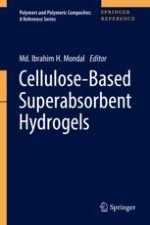2019 | OriginalPaper | Chapter
50. Synthesis and Applications of Carbohydrate-Based Hydrogels
Authors : Sarah Farrukh, Kiran Mustafa, Arshad Hussain, Muhammad Ayoub
Published in: Cellulose-Based Superabsorbent Hydrogels
Publisher: Springer International Publishing
Activate our intelligent search to find suitable subject content or patents.
Select sections of text to find matching patents with Artificial Intelligence. powered by
Select sections of text to find additional relevant content using AI-assisted search. powered by
